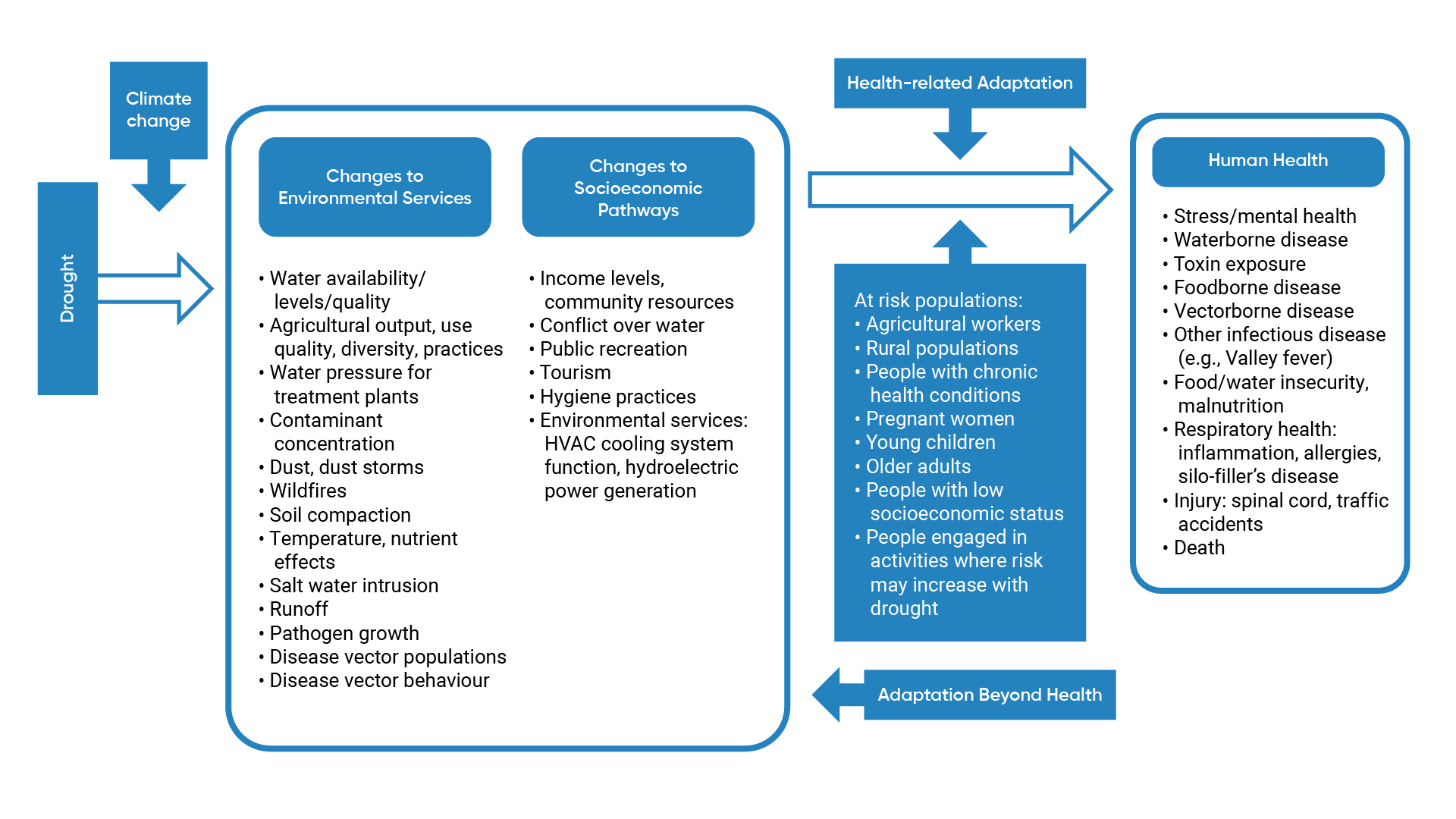Background
Drought is a shortage of precipitation that lasts for an extended period of time; the lack of available water can negatively impact people, ecosystems, industry and sectors such as agriculture.1,2 Droughts can last several weeks, or extend to several years and often lack a clear start and end, making them different from other climate hazards.1,3,4 While the focus is often on a lack of precipitation in the spring and summer growing season, droughts can occur in any season. Droughts also vary in their geographic range and can impact very small to very large areas.1,3,4
Global temperatures are projected to increase because of climate change. As a result of this increase there will be greater evapotranspiration leading to a greater risk of drought3,5. This can occur even where precipitation increases, as it may under climate change, because the effects of greater precipitation could be outweighed by the increases in temperature.6 Despite uncertainty around estimates of potential evapotranspiration, there is medium confidence , that by the end of the 21st century, droughts will increase in frequency and intensity in the southern Canadian Prairies and interior British Columbia during the summer, under high emission scenarios.3,5 Similarly, under high greenhouse gas emissions (RCP8.5), projected increases in summer drying and in winter precipitation may lead to moderate annual water deficits in other parts of Canada (e.g. Yellowknife, Northwest Territories; Guelph, Ontario) towards the end of the century.6
The Standardized Precipitation Evapotranspiration Index (SPEI)7 identifies drought severity and gives an indication of surface water deficit (negative values) or surplus (positive values) with respect to hydroclimatic conditions in the chosen reference period. The SPEI takes into consideration precipitation as well as potential evapotranspiration, and allows comparisons across different time- and spatial-scales.6,7 The inclusion of potential evapotranspiration, and thus the effect of temperature on evapotranspiration, allows the SPEI to take into consideration the climate water balance and the possible impact of climate change on drought in the future.6,7
ClimateData.ca can be used to explore how SPEI may change in the future at the seasonal (SPEI 3-months) or annual (SPEI 12-months) time scales in response to low, moderate and high greenhouse gas emissions scenarios (RCPs 2.6, 4.5 and 8.5, respectively). Figure 1 illustrates projections of SPEI for Saskatoon (SK).

